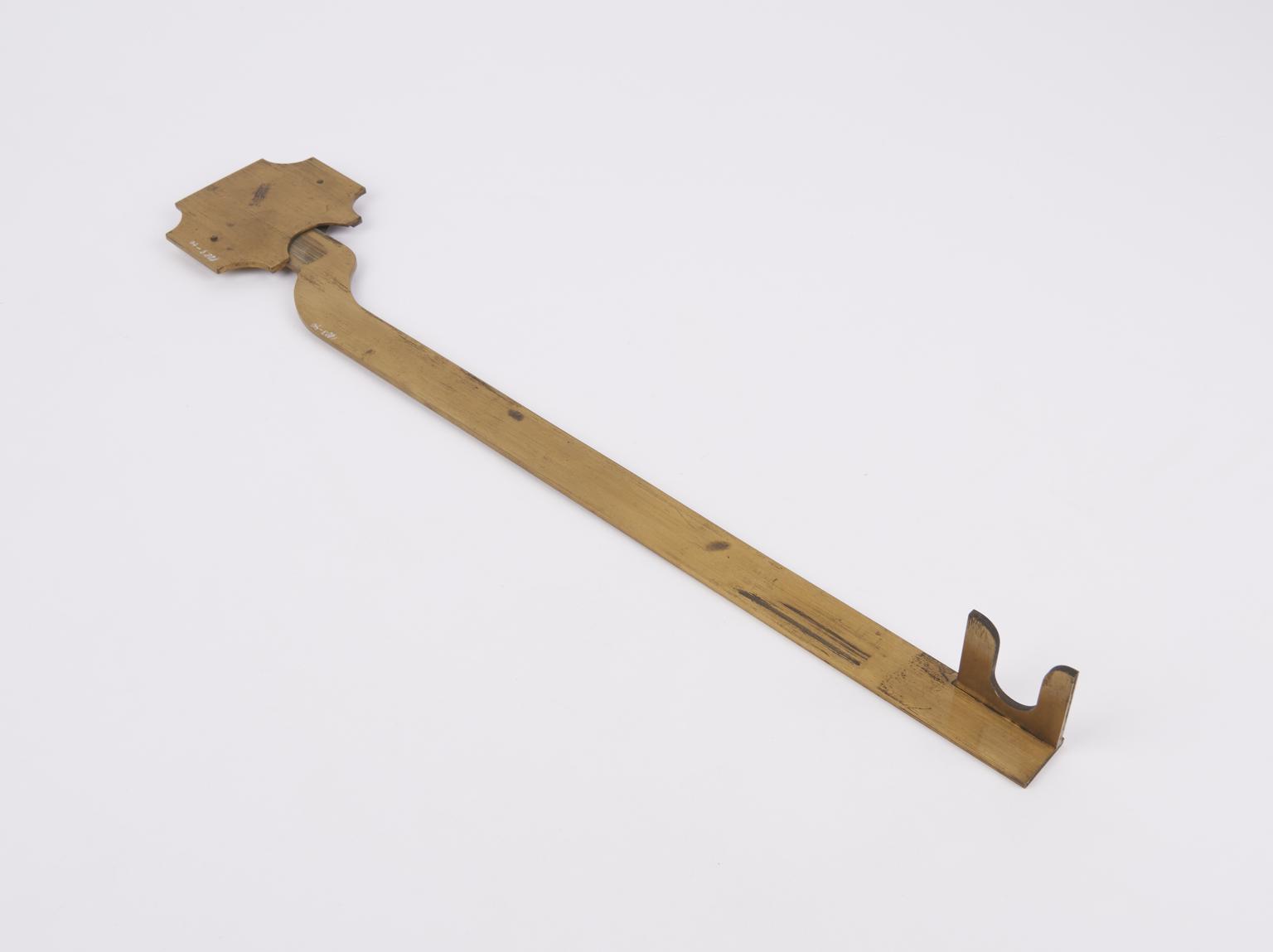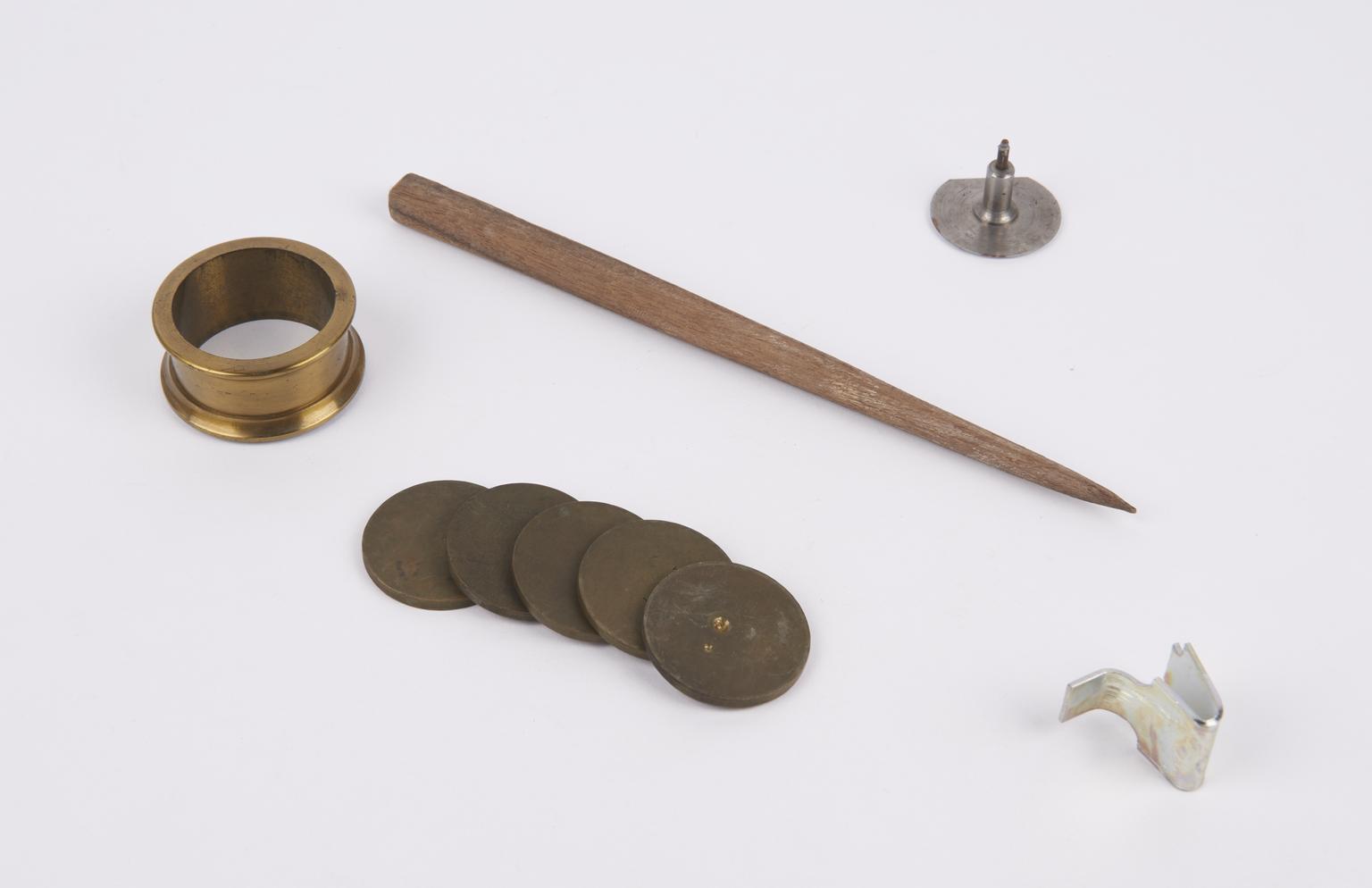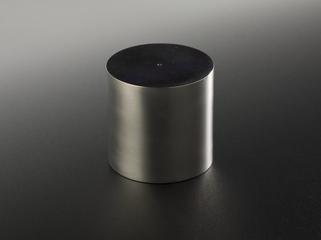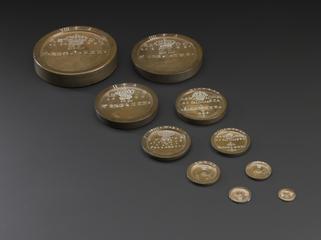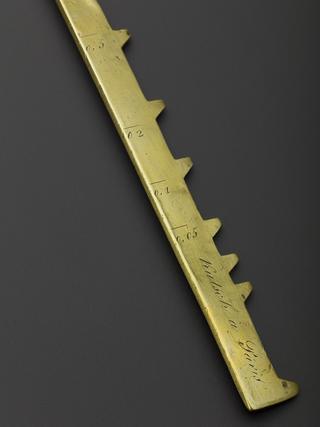Model of the balance used for weighing and sorting coins at the Royal Mint
Model of the balance used for weighing and sorting coins at the Royal Mint
More
This is a simplified enlarged 2:1 scale model of an automatic balance employed in the Royal Mint. It is powered by three cams (devices which convert rotary motion into linear motion) and employs a counterpoise system to separate coins into different classes: light, standard or heavy. The balance is highly sensitive, accurate to 0.01 grain (0.0006479891 grams), and can weigh around 22 coins per minute.
The coins are fed into the balance using a chute and automatically pushed onto the weighing beam before being sorted into the correct category using both a counterpoise weight (equal to the lightest permissible coin) and a wire representing 1/100th of a grain less than the remedy weight (remedy = accepted variation from the standard weight). Depending on the weight of the coin being weighed in relation to these heavy and light standards, its categorisation can be determined.
In 1842 it was announced that a significant proportion of coinage had been depreciated through wear and fell below the standard weight. Discrepancies between different balances caused confusion, leading to the development of the automatic balance that this model is based on. This balance was patented in 1842 by William Cotton, Governor of the Bank of England. It was manufactured by J.M. Napier and an improved version of the machine was adopted by the Royal Mint in 1851.
- Measurements:
-
overall: 460 mm x 885 mm x 416 mm,
- Materials:
- brass (copper, zinc alloy) , wood (unidentified) and metal (unknown)
- Object Number:
- 1883-40/1
- type:
- model - representation
